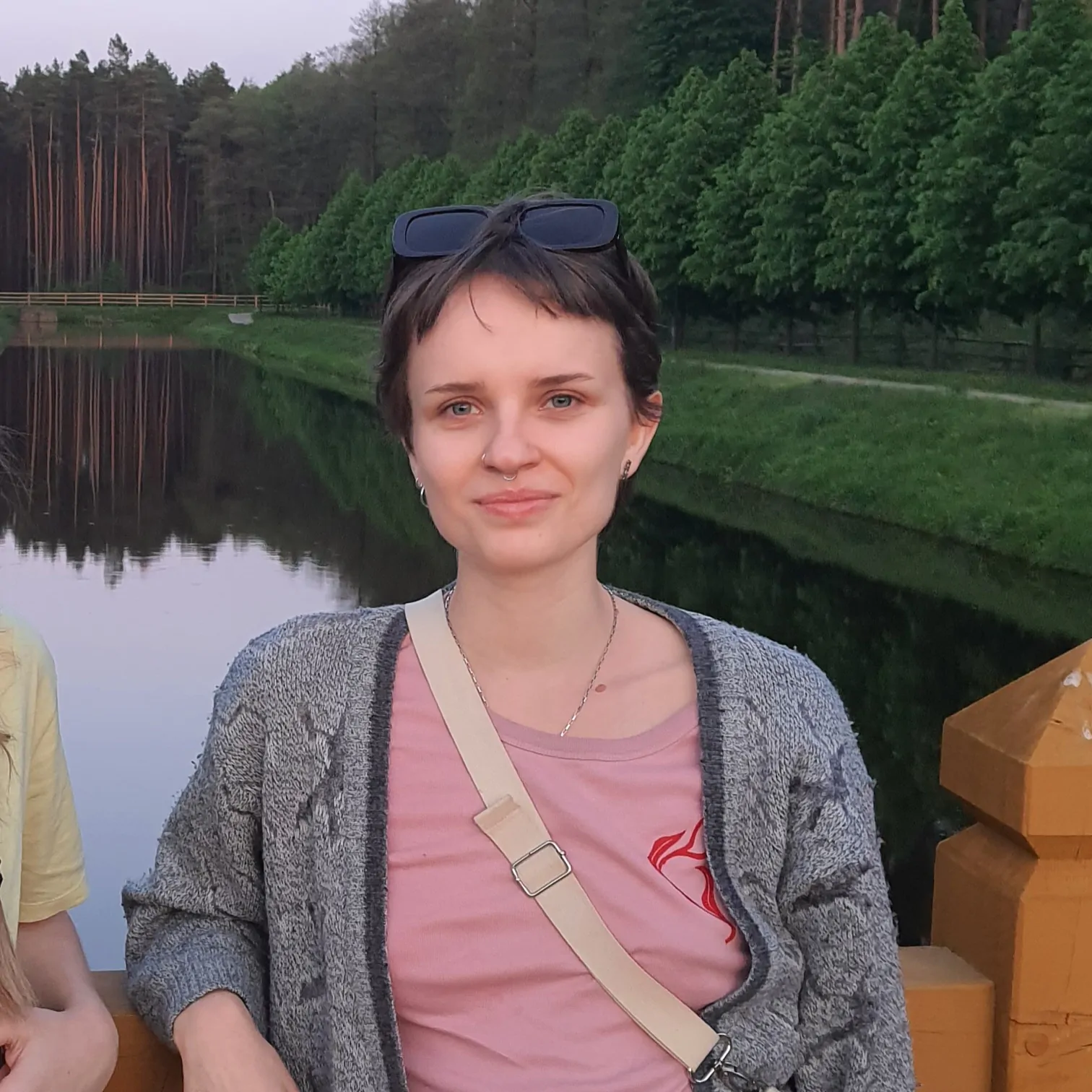Katarzyna Tratkiewicz
Research interests
- Cellular basis for irradiation resistance in flatworms
- Microscopy techniques
- Taxonomy of catenulids
Ongoing research projects
- Elucidating ecological and developmental causes of asexual reproduction and colony formation in flatworms (Polish Returns NAWA, no. BPN/PPO/2023/1/00002), principal investigator: dr Ludwik Gąsiorowski
- Evolutionary perspective on irradiation resistance of stem cells (NCN Sonata 20, no. 2024/55/D/NZ3/00555), principal investigator: dr Ludwik Gąsiorowski
Publications
Tratkiewicz, Katarzyna; Gąsiorowski, Ludwik
Spontaneous ectopic head formation enables reversal of the body axis polarity in microscopic flatworms Journal Article
In: Proc. R. Soc. B., vol. 292, no. 2057, 2025, ISSN: 1471-2954.
@article{Tratkiewicz2025b,
title = {Spontaneous ectopic head formation enables reversal of the body axis polarity in microscopic flatworms},
author = {Katarzyna Tratkiewicz and Ludwik Gąsiorowski},
doi = {10.1098/rspb.2025.1941},
issn = {1471-2954},
year = {2025},
date = {2025-10-00},
urldate = {2025-10-00},
journal = {Proc. R. Soc. B.},
volume = {292},
number = {2057},
publisher = {The Royal Society},
abstract = {In most of the animals, the antero-posterior axis is specified during early embryogenesis. However, in the organisms that undergo somatic asexual reproduction, constant re-establishment of the body axis occurs during each asexual act in the context of the fully formed adult body. In microscopic flatworms from the genus Stenostomum the new head and tail structures are inserted in the pre-existing body plan during the asexual process known as paratomy. Here, we report a spontaneously occurring developmental error that results in the formation of worms with double heads at opposite ends of their bodies, lacking posterior pole identity. In the set of experiments, we show that the double-head phenotype is not heritable on the organismal level. Worms originating from the sectioning or fission of the double-head animals give rise to the healthy populations that do not display the erroneous asexual development. We also demonstrate that the piece of the worm with ectopic head can survive, regenerate the tail on its previously anterior pole and resume asexual reproduction. Effectively, such regeneration allows stable reversal of the body axis polarity without impairment of the survival or reproductive abilities of the animal, an exceptionally rare phenomenon among bilaterians.},
keywords = {},
pubstate = {published},
tppubtype = {article}
}
In most of the animals, the antero-posterior axis is specified during early embryogenesis. However, in the organisms that undergo somatic asexual reproduction, constant re-establishment of the body axis occurs during each asexual act in the context of the fully formed adult body. In microscopic flatworms from the genus Stenostomum the new head and tail structures are inserted in the pre-existing body plan during the asexual process known as paratomy. Here, we report a spontaneously occurring developmental error that results in the formation of worms with double heads at opposite ends of their bodies, lacking posterior pole identity. In the set of experiments, we show that the double-head phenotype is not heritable on the organismal level. Worms originating from the sectioning or fission of the double-head animals give rise to the healthy populations that do not display the erroneous asexual development. We also demonstrate that the piece of the worm with ectopic head can survive, regenerate the tail on its previously anterior pole and resume asexual reproduction. Effectively, such regeneration allows stable reversal of the body axis polarity without impairment of the survival or reproductive abilities of the animal, an exceptionally rare phenomenon among bilaterians.
Tratkiewicz, Katarzyna; Wójtowicz, Joanna; Bukat, Alicja; Kowalewska, Łucja
Ciało prolamellarne jako unikatowy model błon biologicznych: struktura, funkcja i perspektywy aplikacyjne Journal Article
In: Postępy Biochemii, 2025, ISSN: 0032-5422.
@article{Tratkiewicz2025,
title = {Ciało prolamellarne jako unikatowy model błon biologicznych: struktura, funkcja i perspektywy aplikacyjne},
author = {Katarzyna Tratkiewicz and Joanna Wójtowicz and Alicja Bukat and Łucja Kowalewska},
doi = {10.18388/pb.2021_601},
issn = {0032-5422},
year = {2025},
date = {2025-05-16},
urldate = {2025-05-16},
journal = {Postępy Biochemii},
publisher = {Polskie Towarzystwo Biochemiczne (Polish Biochemical Society)},
abstract = {<jats:p>The prolamellar body (PLB) is a complex membrane structure found in plant etioplasts that exhibits a diamond-type cubic symmetry. The PLB features a unique architecture based on two independent aqueous channels of distinct geometries: the larger one remains in contact with the plastid stroma, while the smaller one serves as a precursor to the thylakoid lumen. This structure is formed through a precisely organized arrangement of lipids (mainly MGDG and DGDG), proteins (primarily LPOR), and pigments (including protochlorophyllide and carotenoids). Studies involving mutants with altered biochemical compositions, and analyses of stress factors affecting PLB organization, have clarified the roles of individual components in its formation and stabilization. The PLB’s unique features—such as its large scale (approximately 80 nm), phototransformation capability, and biocompatibility, make it a compelling model for new biomaterials, particularly in controlled-release systems. Recent advances in creating biomimetic structures inspired by the PLB have opened new avenues in nanomaterials engineering.</jats:p>},
keywords = {},
pubstate = {published},
tppubtype = {article}
}
<jats:p>The prolamellar body (PLB) is a complex membrane structure found in plant etioplasts that exhibits a diamond-type cubic symmetry. The PLB features a unique architecture based on two independent aqueous channels of distinct geometries: the larger one remains in contact with the plastid stroma, while the smaller one serves as a precursor to the thylakoid lumen. This structure is formed through a precisely organized arrangement of lipids (mainly MGDG and DGDG), proteins (primarily LPOR), and pigments (including protochlorophyllide and carotenoids). Studies involving mutants with altered biochemical compositions, and analyses of stress factors affecting PLB organization, have clarified the roles of individual components in its formation and stabilization. The PLB’s unique features—such as its large scale (approximately 80 nm), phototransformation capability, and biocompatibility, make it a compelling model for new biomaterials, particularly in controlled-release systems. Recent advances in creating biomimetic structures inspired by the PLB have opened new avenues in nanomaterials engineering.</jats:p>
